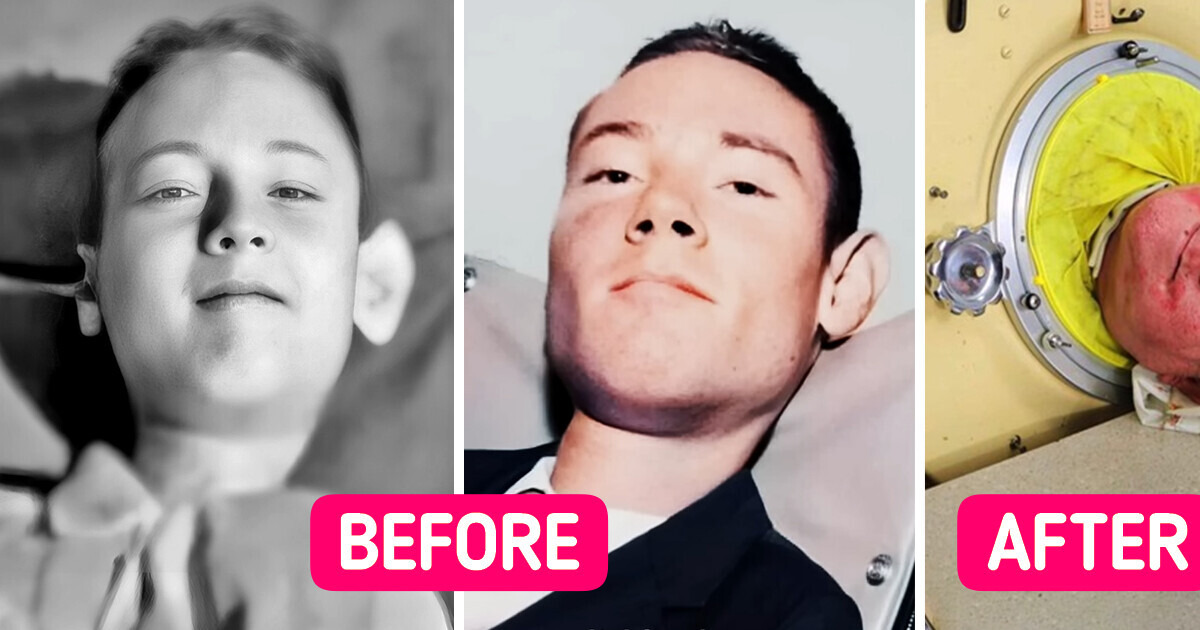A Woman With 96% Body Burns Now Confidently Wears Swimsuits, Embracing and Normalizing Scars


Paul Alexander was an ordinary child when the poliomyelitis outbreak began in 1952. At just 6 years old, he narrowly escaped death. Doctors managed to save his life by placing him in an “iron lung” to help him continue breathing. Since then, Paul has been living in the apparatus, but it hasn’t broken his spirit. He pursued education, became a successful lawyer, and had plans to get married.
At the age of 6, Paul Alexander was afflicted with polio, a highly contagious disease that can cause paralysis. The once lively and active young boy was rushed to the hospital, where doctors performed an emergency tracheotomy to help him breathe. However, the aftermath left him paralyzed from the neck down, with his diaphragm unable to function normally.
“Our mother called for us to come in for dinner, and I remember her taking one look at me — hot and wet and feverish — and she cried out, ’Oh my God!’ She ripped my clothes off and threw me onto her and my dad’s bed and called the doctor,” Alexander recalled.
He remembers that his mother knew right away that he had polio. He wasn’t sure how she knew, but she was able to correctly identify his illness. He experienced a fever and felt very hot, and as a result, he stayed in bed for several days. He had a coloring book that he used to distract himself from his illness, and he felt the urge to color as much as he could — it was as if he understood that he might not be able to do it again in the future.
While in the hospital, which was overwhelmed with an excessive number of polio patients to treat, both he and his family were informed that there was nothing that could be done to help him. He was left lying on a gurney, struggling to breathe. Thankfully, a more skilled doctor came to his aid shortly after and performed an emergency tracheotomy to create an airway, which allowed the doctor to remove the fluid that had been accumulating in his lungs.
“The next thing I remember, I was inside an iron lung,” said Paul. After being diagnosed with polio, Alexander was put on an iron lung to assist with his breathing, unaware that he would rely on the machine for the rest of his life. The disease rendered Alexander paralyzed, with only the ability to move his head, neck, and mouth, which made his life and education much more challenging.
Despite the overwhelming obstacles he faced, Alexander remained determined to fight his condition. During his initial 18 months spent in the hospital, he made the decision to never give up and to live life to the fullest.
As a result of his paralysis, Alexander was homeschooled and developed a unique way of memorizing facts without the ability to take notes. His father created a specialized pen that he could operate with his mouth, allowing him to continue his education. Despite these challenges, he excelled in school and went on to pass the bar exam, becoming a lawyer.
He continued to use the iron lung, which he brought with him to the University of Texas, where he lived in the dorm with it. He made many friends who were curious about “the man with his head sticking out of the machine.”
However, their relationship faced a hurdle when Claire’s disapproving mother intervened and forbade them from marrying, even going as far as banning Paul from speaking to her daughter ever again. Reflecting on the incident, Paul recalls, “Took years to heal from that.” He ended up never getting married since then.
Alexander’s apparatus, devised in 1928, ceased production in the late ’60s due to technological advancements. The iron lung, an airtight capsule excluding the head, draws in oxygen through negative pressure, compelling lung expansion for breathing.
This device is sizable and cumbersome, necessitating the user’s confinement inside. Despite the availability of more contemporary machinery, Alexander chose to persist with his iron lung. In a 2020 interview, he expressed his preference for his “old iron horse,” having grown accustomed to it by the time newer devices were developed.
Interestingly, he adamantly declined adopting newer devices that would require an additional hole in his throat. Alexander has mastered the art of breathing briefly outside the iron lung using a technique known as “frog breathing.” This method involves utilizing throat muscles to propel air past the vocal cords, enabling the intake of oxygen in small increments, guiding it down the throat and into the lungs.
We admire people with such resilience. Take, for instance, this young student who suffers from a rare form of arthritis but continues to find joy in life.











